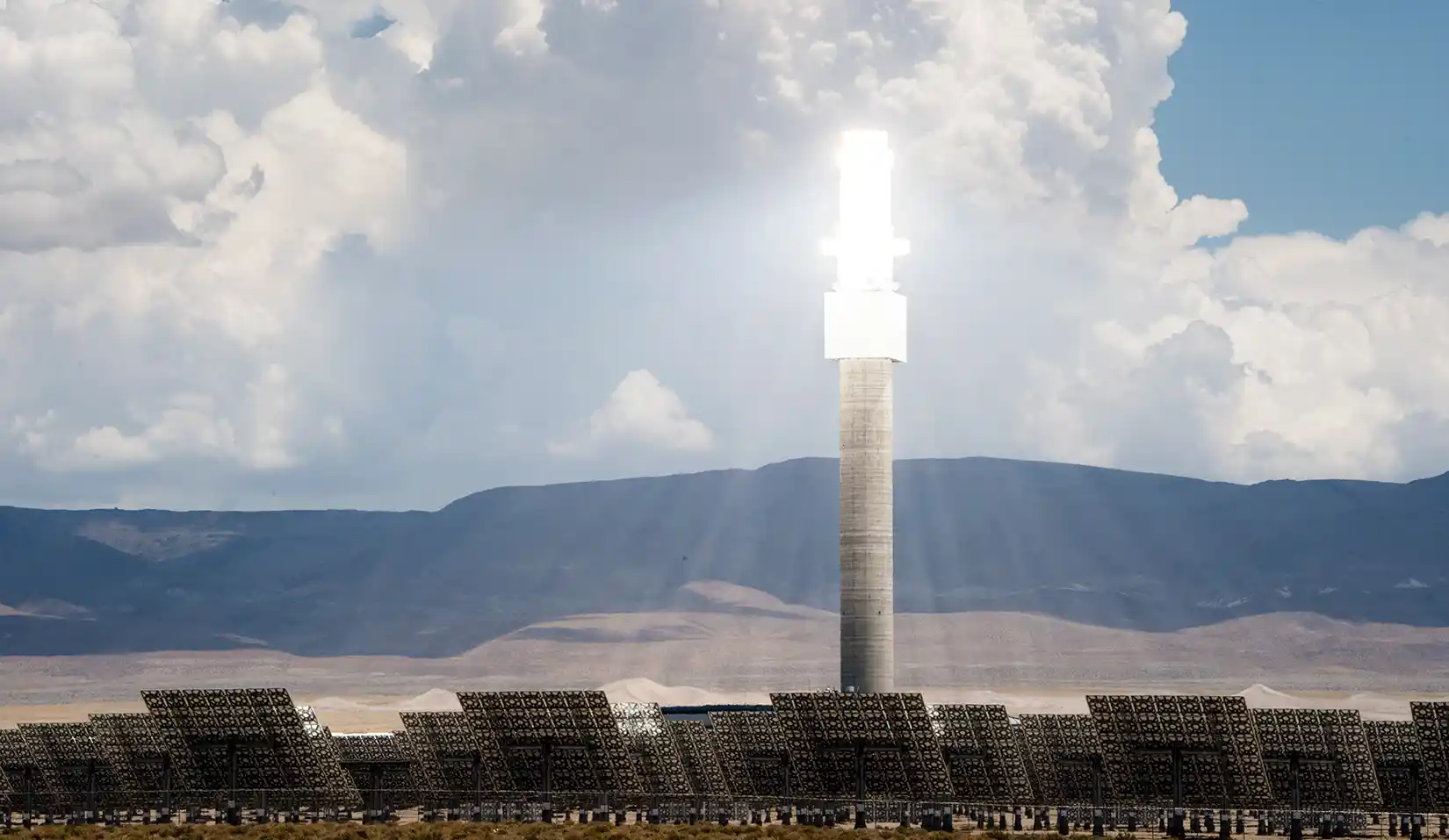Concentrating Solar Power Basics
Concentrating solar power systems harness heat from sunlight to provide electricity for large power stations or for high-temperature industrial processes.

Over 10,000 tracking heliostats focus solar energy at the receiver on the 640-foot power tower at the Crescent Dunes Solar Thermal Facility, generating over 500,000 megawatt hours of electricity per year. Photo by Dennis Schroeder / NREL
Concentrating solar power (CSP) uses a large array of mirrors to concentrate the sun’s rays and convert them into high-temperature heat. For electricity generation, CSP plants can then use that heat to power industrial processes to boil water for steam turbines to produce electricty just as in fossil-fuel power plants.
CSP can provide reliable heat or electricity by integrating long-duration thermal energy storage for 10 or more hours. Thermal energy storage uses low-cost, bulk materials like salt or sand to store heat for hours to days. This stored energy can be dispatched to industrial heat users or steam turbines for electric power when needed.
The two main types of concentrating solar power systems are: linear concentrator and power tower systems.
Linear Concentrator Systems
Linear concentrator systems collect the sun's energy using long rectangular, curved (U-shaped) mirrors. The mirrors are tilted toward the sun, focusing sunlight on tubes (or receivers) that run the length of the mirrors. The reflected sunlight heats a fluid flowing through the tubes. The hot fluid then is used to boil water in a conventional steam-turbine generator to produce electricity.
There are two major types of linear concentrator systems: parabolic trough systems, where receiver tubes are positioned along the focal line of each parabolic mirror; and linear Fresnel reflector systems, where one receiver tube is positioned above several mirrors to allow the mirrors greater mobility in tracking the sun.
Power Tower Systems
A power tower system uses a large field of flat, sun-tracking mirrors known as heliostats to focus and concentrate sunlight onto a receiver on the top of a tower. A heat-transfer fluid heated in the receiver is used to generate steam, which, in turn, is used in a conventional turbine generator to produce electricity.
Some power towers use water/steam as the heat-transfer fluid. Other advanced designs are experimenting with molten nitrate salt or solid particles because of their superior heat-transfer and energy-storage capabilities. Storing these heat-transfer materials in tanks allows the system to continue to dispatch electricity during cloudy weather or at night.
Additional Resources
Concentrating Solar Power Research
Concentrating Solar-Thermal Power Basics (U.S. Department of Energy)
Thermal Storage System Concentrating Solar-Thermal Power Basics (U.S. Department of Energy)
Power Tower System Concentrating Solar-Thermal Power Basics (U.S. Department of Energy)
Dish/Engine System Concentrating Solar-Thermal Power Basics (U.S. Department of Energy)
Linear Concentrator System Concentrating Solar-Thermal Power Basics (U.S. Department of Energy)
Energy Kids: Solar Thermal Power Plants (U.S. Energy Information Administration)
Share
Last Updated Aug. 27, 2025
